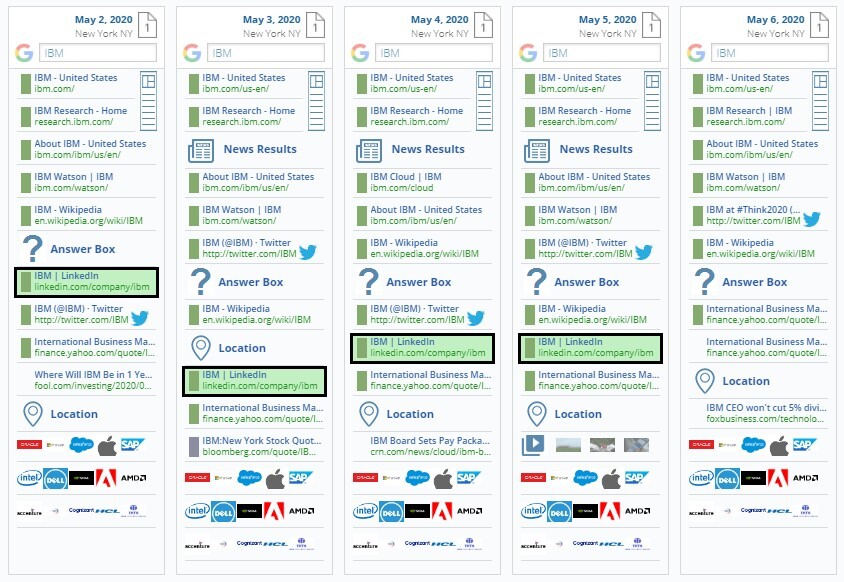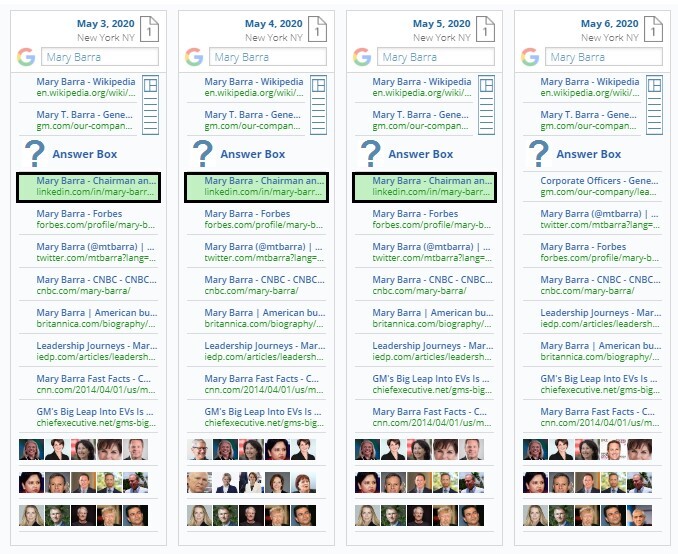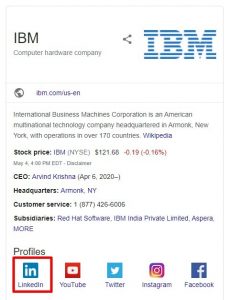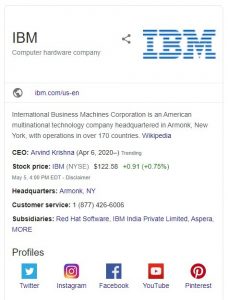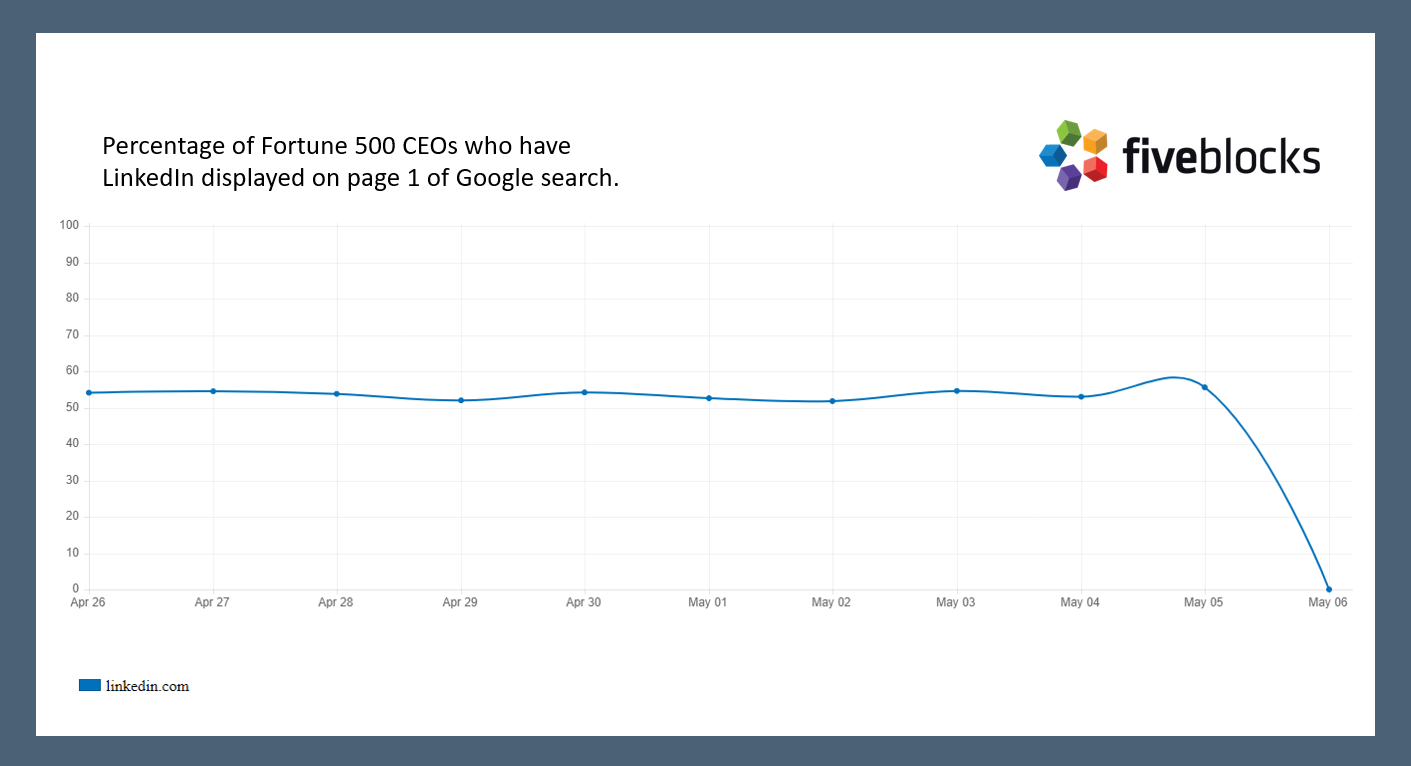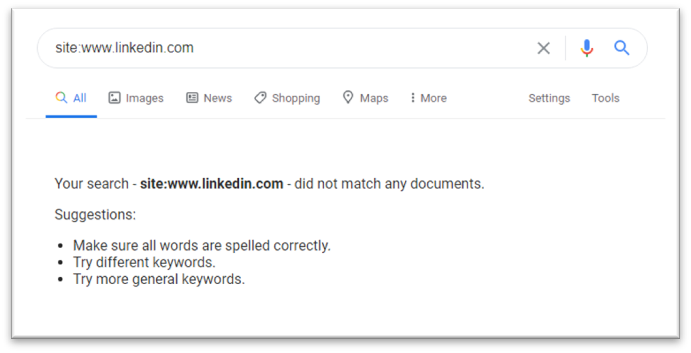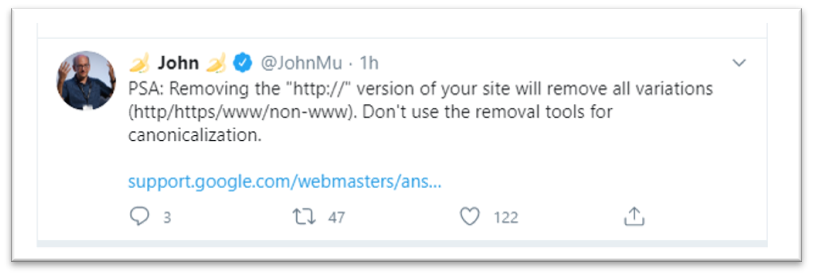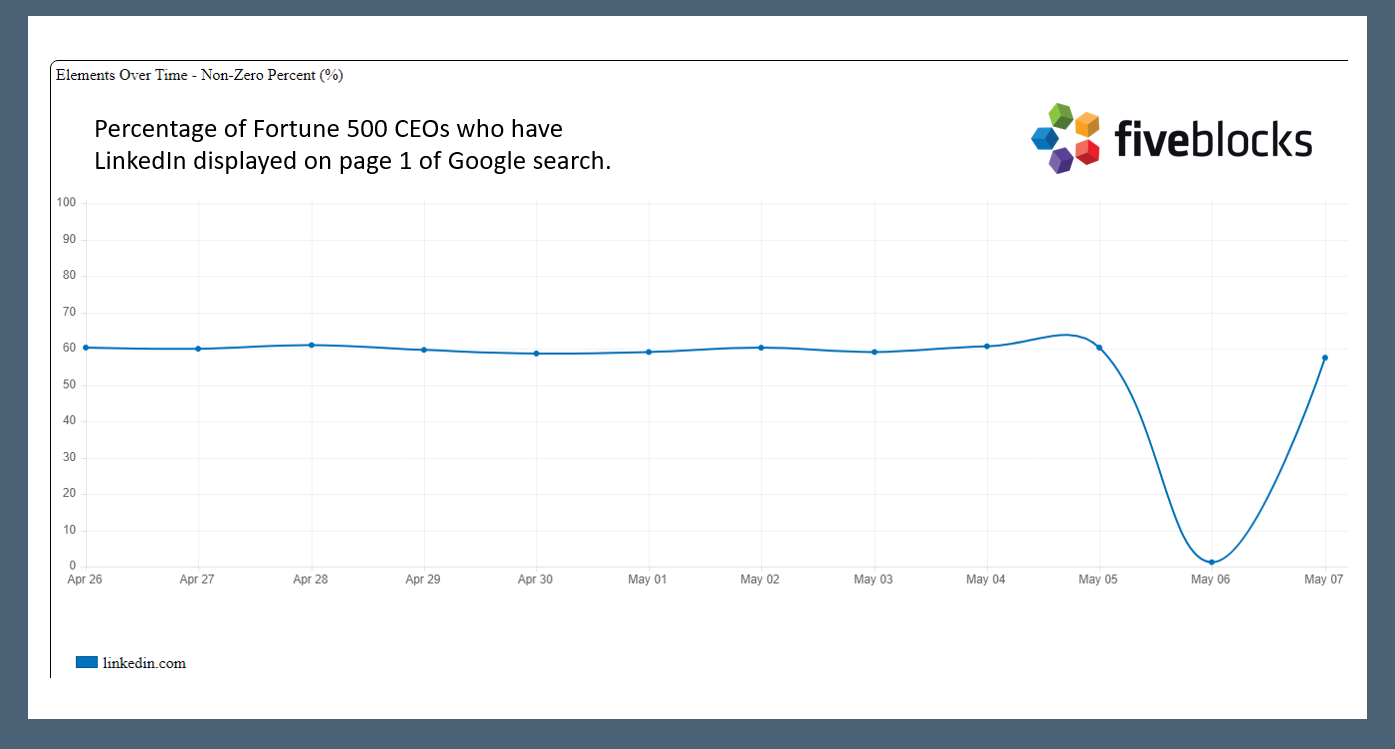The Day LinkedIn Disappeared from Google
On May 6th, overnight, about 273,000,000 LinkedIn results disappeared from Google search results.
We noticed it first, or rather – our technology did.
The below screenshot from our IMPACT analytics platform shows that LinkedIn typically appears on page 1 for “IBM,” but on May 6th — it disappeared completely.
It was the same for individuals. Search results for “Mary Barra” (CEO of GM) showed that although she usually has LinkedIn as the first result after Wikipedia and her corporate bio page, on May 6th it was gone (replaced by a second link to GM’s site).
At the same time that LinkedIn disappeared from search results, the icon for LinkedIn also disappeared from the Knowledge Panel. For IBM it was replaced by a Pinterest icon. See before and after..
The LinkedIn disappearance was across the board.
For example, we track the percentage of Fortune 500 CEOs who have LinkedIn displayed on page 1 of their search results.
Usually it is about 55%. On May 6th, none of the CEOs had LinkedIn displayed.
We did not know what caused LinkedIn to disappear, but we did know that the main site was not being included in Google’s search index.
In other words, LinkedIn had been de-indexed by Google.
A search preceded by “site:” shows all the pages within a domain that are in Google’s index. This search showed that no pages from www.linkedin.com were included in search.
Here is what that search had previously looked like:
The pages still existed, and the site was still live. Someone who went directly to www.linkedin.com would never have noticed this search engine issue.
LinkedIn has country specific domains, which continued to rank in Google. For example, the French site still had all 23 million results appearing in search.
We also noticed that it was an issue specifically with Google.
On Bing, for example, LinkedIn continued to appear in search results.
Initially, we were unsure of the reason for LinkedIn to be dropped from results. It seemed unlikely that Google would choose to entirely remove such a major site. According to Similarweb, LinkedIn is the 26th most visited site in the USA, and over 23% of visitors to the site come via a search engine.
In the past, we have seen the Google algorithm demote sites for various reasons. However, we have never seen Google completely remove a major domain from search before.
It also seemed unlikely that LinkedIn would choose to remove itself from Google search.
Unless it was a mistake.
So as one does, we turned to Twitter.
First to notice this massive shift in search results, Five Blocks tweeted about it, looking for answers. SEO leader Barry Schwartz wrote about it on Search Engine Roundtable, and tagged two of Google’s spokespeople in a tweet.
A short while later, John Muller of Google tweeted a PSA which didn’t mention LinkedIn directly, but seems to have provided the clue to what had happened.
We understood this to be a cryptic message to LinkedIn, telling them that someone accidentally clicked a button in Search Console which removed the site from Google search.
Less than 24 hours after LinkedIn fell out of Google, it returned.
The graph below shows that very quickly, the percentage of Fortune 500 CEOs who had LinkedIn displayed on page 1 returned to about the same point it had been previous to May 6th.
IBM‘s and Mary Barra‘s results both returned to their normal state.
All’s well that ends well.
Key Takeaways
The LinkedIn disappearance was a perfect opportunity for Five Blocks and our clients to be reminded of some fundamentals of online reputation management.
Here are some of our takeaways:
- It is essential to continue to monitor results every day. Someone, somewhere, accidentally clicking the wrong button can have an enormous, unexpected impact on search results.
- When LinkedIn does not appear in search it can potentially make results noticeably worse. Conversely, having LinkedIn in search can make results much better. That’s why we encourage clients to create and optimize LinkedIn and ensure that their profiles are indexed.
- We cannot rely too heavily on any one domain when working to improve search results. Even prominent and well-established domains can sometimes let us down. The more we use a variety of tactics and tools to enhance reputation the more secure the results will be.
- The Google Knowledge Panel is totally dynamic. Each time a search is made, Google checks the index to know what to display in the Knowledge Panel. As soon as LinkedIn was de-indexed, it disappeared from the Knowledge Panel. And as soon as the site was re-indexed, the icon reappeared. So, just because the Knowledge Panel looks the way it does now, does not mean it will stay that way tomorrow.
